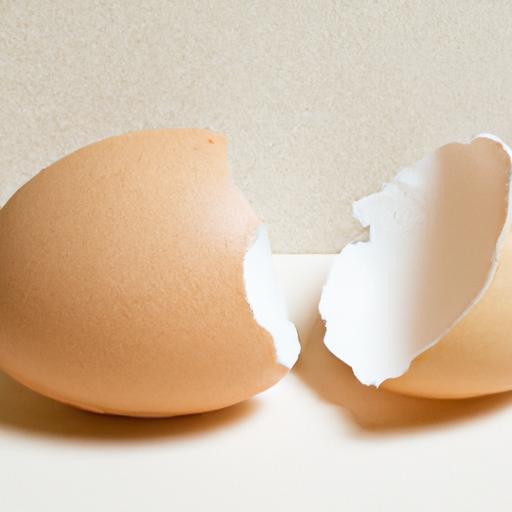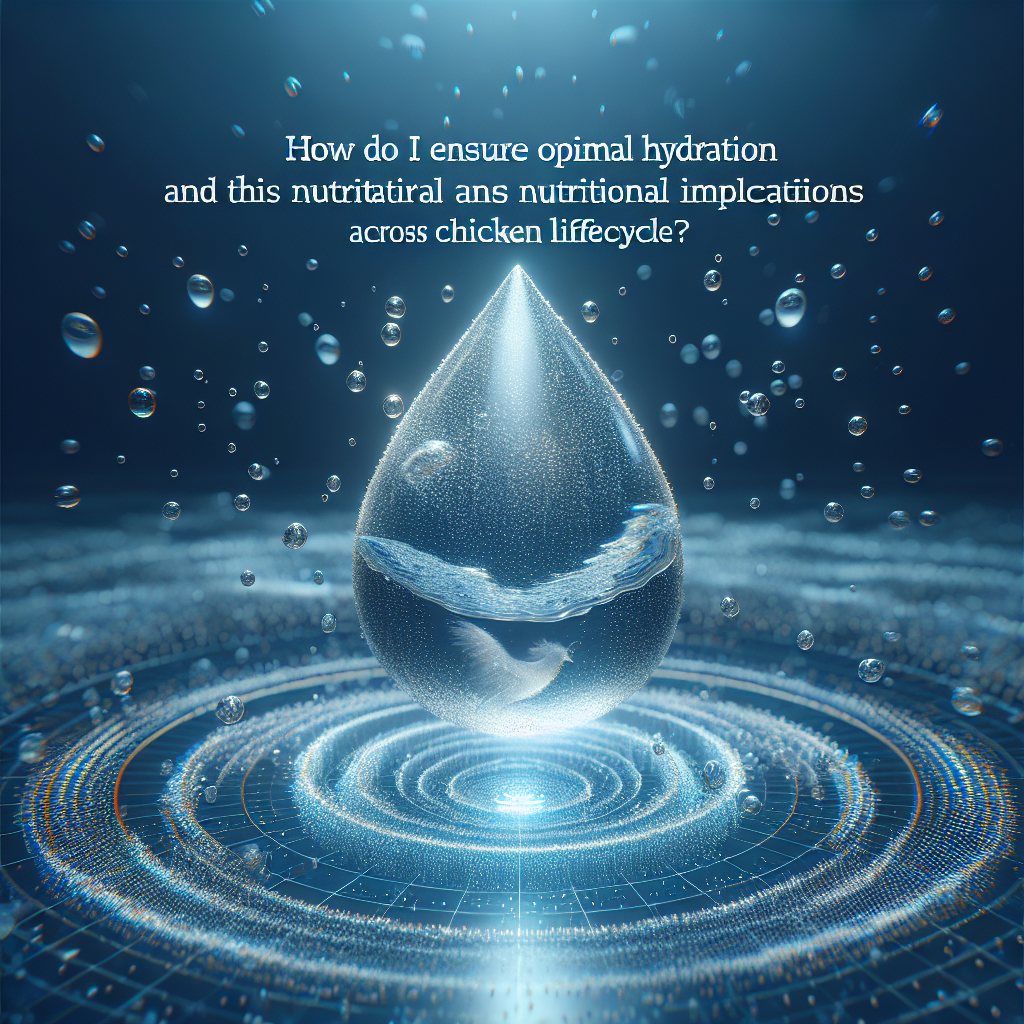Are you curious about the protein requirements of chicks versus mature laying hens? It’s fascinating to explore the differences in these feathered friends’ dietary needs. As the little ones grow into adulthood, their bodies undergo various changes that shape their protein requirements. In this article, we’ll delve into the specifics of how chicks’ protein needs differ from those of mature laying hens, shedding light on the importance of providing the appropriate nutrition for each stage of their lives. So, let’s embark on this informative journey together!
Protein Requirements for Chicks
Importance of Protein for Chicks
Protein is essential for the growth and development of chicks. It plays a crucial role in building and repairing tissues, forming enzymes, hormones, and antibodies, and providing energy. It is especially important during the early stages of life when chicks are rapidly growing and developing. Adequate protein intake is necessary to ensure proper muscle and bone development, feather growth, and overall health of chicks.
Protein Requirements by Age
The protein requirements of chicks vary depending on their age and stage of development. During the first week of life, chicks require a higher protein level of around 20-22%. This high protein content is necessary to support their rapid growth and development. As chicks grow older, their protein requirements decrease slightly. From the second to the eighth week of life, a protein level of around 18-20% is sufficient to meet their nutritional needs. After the eighth week, chicks can be transitioned to a grower feed with a protein content of around 16-18%.
Essential Amino Acids for Chicks
Chicks not only require sufficient protein but also a balanced ratio of essential amino acids. Amino acids are the building blocks of protein, and each amino acid plays a specific role in the chick’s development. Essential amino acids, such as methionine, lysine, and arginine, cannot be synthesized by the chick’s body and must be obtained through their diet. These amino acids are crucial for proper growth, feathering, and immune function. Therefore, it is essential to provide chicks with a diet that includes all the essential amino acids in the correct proportions.
Protein Requirements for Mature Laying Hens
Importance of Protein for Laying Hens
Protein is equally important for mature laying hens as it is for chicks. Laying hens have additional nutritional demands due to the demands of egg production. Protein is necessary for the formation of egg albumen, yolk, and shell. Adequate protein intake ensures a consistent and healthy egg production. Additionally, protein is needed for maintaining muscle mass, supporting immune function, and overall health of the laying hens.
Protein Requirements during Laying Period
During the laying period, mature hens have relatively high protein requirements. It is generally recommended to provide laying hens with a diet containing around 16-18% protein. This level of protein enables the hens to meet the demands of continuous egg production. However, in some cases, hens may require higher protein levels, especially when they are producing larger eggs or undergoing stressful conditions, such as high environmental temperatures. In such situations, increasing the protein content in their diet may be beneficial.
Adjustments during Stressful Periods
Stressful conditions, such as extreme temperatures, disease outbreaks, or molting, can have an impact on the protein requirements of laying hens. These periods of stress can increase the metabolic demands of hens, affecting their nutrient requirements, including protein. During stressful periods, it may be necessary to adjust the protein content in the diet to meet the hens’ increased needs. Consulting a poultry nutritionist or veterinarian can provide guidance on the appropriate adjustments to make during these challenging times.
Differences in Protein Requirements
Stage of Development
The protein requirements for chicks and mature laying hens differ primarily due to their stage of development. Chicks require higher levels of protein during their rapid growth phase compared to mature hens, whose protein needs are focused more on egg production and maintenance of overall health. Understanding the specific requirements of each stage is crucial for providing optimal nutrition.
Growth and Feathering
Chicks undergo significant growth and feathering during their early stages of life. This requires a higher protein intake to support the development of muscle and bone, as well as the growth of feathers. In contrast, mature laying hens have already completed their growth phase, and their feathering requirements are more focused on maintaining plumage quality. The protein requirements for feather maintenance are relatively lower for mature hens compared to the rapid feather growth stage of chicks.
Egg Production
Egg production is a demanding process that requires a substantial amount of protein. Mature laying hens require protein to form the different components of the egg, including the egg white, yolk, and shell. As a result, the protein requirements of laying hens are elevated to meet the needs of continuous egg production. Chicks, on the other hand, do not have the same level of egg production demands, and therefore, their protein requirements are focused more on growth and development.
Calcium Requirements
In addition to protein, both chicks and laying hens have specific calcium requirements. Calcium is essential for the development and maintenance of strong bones and eggshell formation. However, the calcium needs of chicks differ from those of laying hens. Chicks require lower levels of calcium compared to laying hens, as excessive calcium intake in chicks can lead to skeletal disorders. Laying hens, on the other hand, require higher levels of calcium to support eggshell formation. Proper management of calcium levels alongside protein is crucial to ensure the optimal health of both chicks and laying hens.
Protein Quality and Sources
High-Quality Protein Sources
The quality of protein is equally important as the quantity when meeting the protein requirements of chicks and mature laying hens. High-quality protein sources contain all the essential amino acids in the correct proportions. Common high-quality protein sources for poultry include soybean meal, fishmeal, meat and bone meal, and canola meal. These protein sources provide a well-balanced amino acid profile, ensuring that the birds receive all the necessary nutrients for their growth, development, and egg production.
Supplementing with Essential Amino Acids
In some cases, the protein content in the feed may not provide sufficient amounts of essential amino acids, especially during periods of high demand or when using lower-quality protein sources. To compensate for this, essential amino acids can be supplemented in the diet. Methionine, lysine, and threonine are some of the essential amino acids commonly supplemented in poultry diets. This ensures that the birds receive a complete and balanced amino acid profile even when the overall protein content may be lacking.
Balancing Dietary Protein for Optimal Health
Achieving the right balance of dietary protein is crucial for the optimal health and performance of chicks and mature laying hens. An imbalance in protein intake can lead to various health issues, such as poor growth, feather abnormalities, decreased egg production, and weakened immune function. Poultry nutritionists can assist in formulating diets with the correct balance of protein and essential amino acids, taking into consideration the specific needs of the birds at each stage of their development.
Feeding Strategies
Starter and Grower Feeds for Chicks
For chicks, feeding strategies should be tailored to meet their specific nutritional requirements at each stage of development. Starter feeds with higher protein levels are typically provided to chicks during their first week of life. These feeds support rapid growth and feathering. As chicks grow older, they are transitioned to grower feeds with slightly lower protein levels. This gradual transition ensures that the chicks receive the right balance of nutrients at each stage for optimal development.
Layer Feeds for Mature Laying Hens
Mature laying hens have different feeding requirements compared to chicks. Layer feeds specifically formulated for laying hens are available to meet their nutritional needs. Layer feeds typically contain lower protein levels compared to starter and grower feeds for chicks, as the focus is on egg production rather than rapid growth. These feeds are designed to provide the necessary energy and nutrients for consistent egg production, maintenance of good health, and proper feather quality.
Considerations for Molt Period
Molting is a natural process in which laying hens shed their feathers and regrow new ones. During this period, a hen’s protein requirements increase due to the demands of feather production. Providing an appropriate feed with higher protein levels during the molt period can support the hens in regrowing healthy feathers. It is important to consider these specific nutritional needs during the molt period to ensure the hens recover well and resume normal egg production.
Meeting Protein Requirements
Choosing the Right Feed
Meeting the protein requirements of chicks and mature laying hens starts with choosing the right feed. It is essential to select feeds specifically formulated for each stage of development. Starter feeds for chicks, grower feeds for young birds, and layer feeds for mature laying hens are all designed to meet the unique nutritional needs of each group. By using feeds specifically tailored for their respective stages, you can ensure that your birds receive the optimal protein content and overall nutrition required for their growth and performance.
Providing Adequate Protein Levels
Meeting the protein requirements of chicks and mature laying hens involves providing an adequate protein level in their diet. This requires understanding the specific protein requirements for each stage of development and selecting feeds or formulating rations accordingly. Regular monitoring of protein levels in the feed and adjusting as needed is crucial to ensure the birds are receiving the necessary nutrients. Consultation with a poultry nutritionist or veterinarian can provide guidance in establishing and maintaining the appropriate protein levels for your flock.
Monitoring Dietary Intake
Monitoring the dietary intake of protein is vital to ensure that chicks and mature laying hens are receiving the necessary amounts to meet their requirements. This can be done by keeping track of the feed consumption and assessing the overall health and performance of the birds. Regular body weight measurements, feather quality observations, and egg production records can provide valuable insights into the adequacy of protein intake. Continuous monitoring allows for timely adjustments to the diet, ensuring that the birds remain healthy and productive.
Factors Affecting Protein Requirements
Genetics
Genetics play a significant role in determining the protein requirements of chicks and laying hens. Different breeds and strains have varying growth rates, egg production capabilities, and overall nutrient utilization. Some breeds may have higher protein requirements due to their genetic predisposition for faster growth or higher egg production. It is important to consider the specific genetic characteristics of your flock when formulating the diet and adjusting protein levels accordingly.
Breeds and Strains
Even within a single species, different breeds and strains may have varying protein requirements. Breeds specifically developed for meat production may require higher protein levels for optimal growth, while breeds selected for egg production may have higher protein needs to support consistent egg laying. Understanding the specific needs of the breed or strain you are raising is essential in providing adequate protein and optimal nutrition.
Health Status
The health status of chicks and mature laying hens can influence their protein requirements. Birds that are experiencing illness or recovering from disease may require higher levels of protein to support immune function and recovery. On the other hand, birds in good health may have stable protein requirements. Regular health monitoring and consultation with a veterinarian can help identify any potential health issues that may warrant adjustments in protein levels.
Environmental Conditions
Environmental conditions, such as temperature, humidity, and stressors, can affect the protein requirements of chicks and laying hens. High ambient temperatures, for example, can increase the metabolic demands of birds, requiring higher protein levels to support their physiological processes. Stressful conditions, such as overcrowding, predator presence, or exposure to harsh weather, can also influence the protein requirements of birds. Adjustments in protein levels may be necessary to ensure the birds can cope with these environmental challenges.
Protein Deficiency and Excess
Consequences of Protein Deficiency
Protein deficiency can have detrimental effects on the health and performance of chicks and mature laying hens. In chicks, protein deficiency can result in poor growth, delayed feathering, weakened immune system, and reduced overall vitality. In laying hens, protein deficiency can lead to reduced egg production, poor shell quality, impaired feathering, and increased susceptibility to diseases. It is crucial to provide adequate protein to prevent these negative consequences and promote optimal physical development and performance.
Protein Excess and Health Issues
While protein is essential, excessive protein intake can also lead to health issues. High-protein diets can put excessive metabolic strain on the kidneys and liver, as these organs are responsible for metabolizing and eliminating excess protein by-products. Prolonged high protein intake can lead to organ damage, decreased feed efficiency, and imbalances in other nutrients. It is important to avoid feeding diets with excessively high protein levels to prevent these complications.
Avoiding Imbalances
Proper monitoring and adjustment of protein levels can help avoid both protein deficiency and excess. Regular assessment of the birds’ health and performance, along with monitoring dietary intake and appropriate adjustments, can help maintain the right balance of protein. Work with a poultry nutritionist or veterinarian to ensure that your flock is receiving the appropriate protein levels for their specific needs, keeping their overall health and productivity in mind.
Managing Protein Requirements
Consulting a Poultry Nutritionist
To effectively manage the protein requirements of chicks and mature laying hens, it is beneficial to seek the expertise of a poultry nutritionist. A poultry nutritionist can evaluate your flock’s specific needs, provide guidance on formulating diets, and recommend appropriate protein levels for each stage of development. They can assist in optimizing the nutrient composition of the feed, ensuring that the birds receive the necessary protein and essential amino acids for their growth, development, and egg production.
Formulating Customized Rations
Formulating customized rations is another way to manage the protein requirements of chicks and mature laying hens. By carefully selecting and combining different feed ingredients, you can achieve the desired protein levels and nutrient balance for your flock. Working with a poultry nutritionist or using scientifically-backed ration formulation software can help in accurately formulating the diets to meet the specific needs of your birds.
Monitoring Performance and Adjusting
Continuous monitoring of the birds’ health, performance, and dietary intake is crucial in managing their protein requirements. Regularly assess the birds’ body weight, feather quality, and egg production to gauge their overall well-being. Additionally, monitor their feed consumption and evaluate the nutrient content of the feed. Adjustments in protein levels may be necessary if any imbalances or deficiencies are detected. By closely monitoring and adjusting the diet as needed, you can ensure that your flock receives optimal nutrition and achieves their full potential.
Conclusion
Understanding and meeting the protein requirements of chicks and mature laying hens is vital in promoting their growth, development, and overall health. Providing the appropriate balance of protein and essential amino acids at each stage of development ensures optimal muscle and bone development, feather growth, and egg production. It is important to select feeds or formulate rations tailored to the birds’ specific needs, considering factors such as breed, health status, and environmental conditions. Regular monitoring of the birds’ dietary intake, health, and performance allows for adjustments in protein levels to maintain their optimal well-being. By managing protein requirements effectively, you can ensure the healthy and productive lives of your chicks and mature laying hens.




